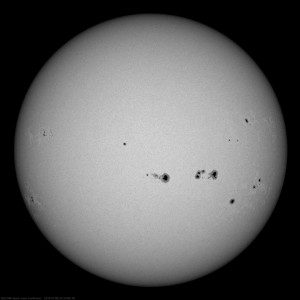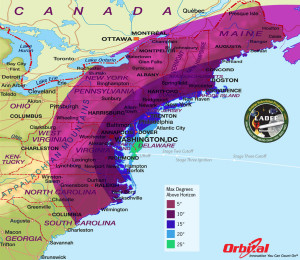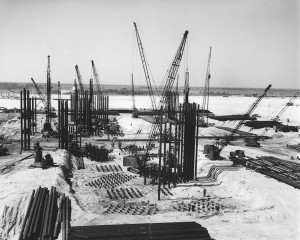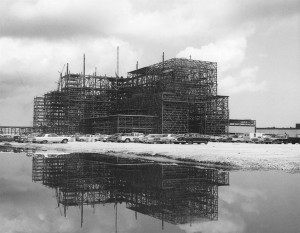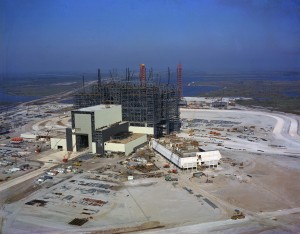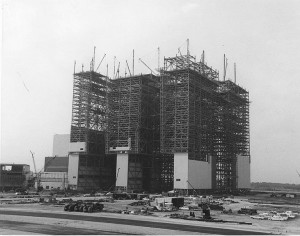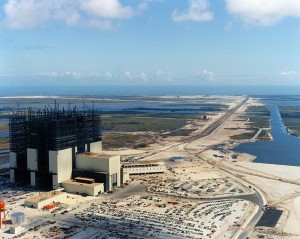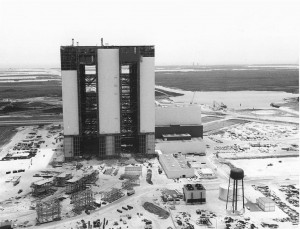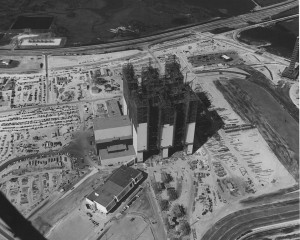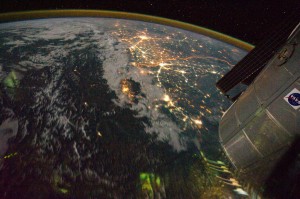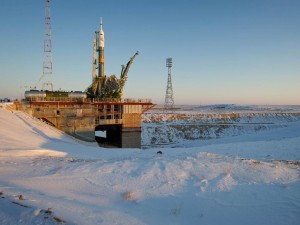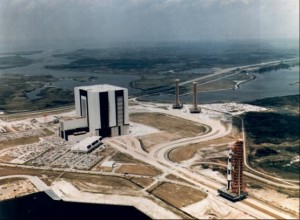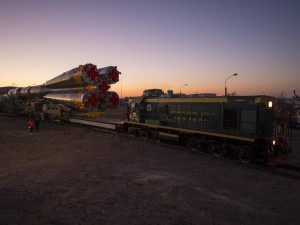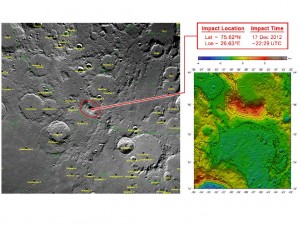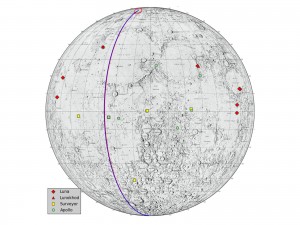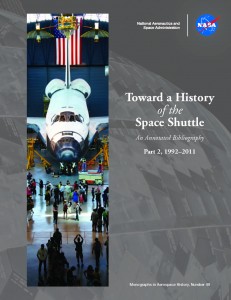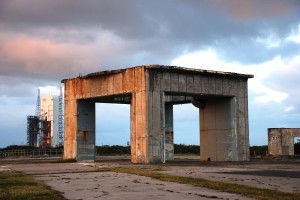
Abandon in Place (Courage). Photo credit: JR
Today I’m giving you my own photo. Until last week, it was on exhibit at the Museum of Flight in Seattle as part of the “2012 Spirit of Flight” show. The photos are no longer on display, but I’ve been writing up a short statement about NASA’s preservation policies to include in the most recent version of my portfolio and this image is at the center of my theorizing right now.
If you’re not familiar with LC 34, it was the site of the Apollo 1 fire that killed astronauts Virgil “Gus” Grissom, Edward H. White, and Roger B. Chaffee. NASA used the launch complex (with modifications) through the Apollo 7 launch in 1968, after which time the Apollo program moved to LC 39A & 39B. According to a 2007 report produced during an Historic American Engineering Record (HAER) survey, LC 34 was mothballed by NASA in November 1971 and abandoned in October 1973 (if you zoom in on the forward leg of the platform, you can see the “ABANDON IN PLACE” stencil).[1] The complex officially belongs to the Cape Canaveral Air Force Station National Historic Landmark District today.
If you’ve been out to LC 34, you’ve probably noticed two things. First, it’s quiet and peaceful on the pad, even if you’re surrounded by dozens of spacetweeps. Part of the tranquility comes from the reverence with which space enthusiasts approach the site, of course, but most of it comes from its relatively remote location. And that’s the second thing: LC 34 is quite distant from the Kennedy Space Center Visitor Complex and the “special access” tours don’t seem to go there these days.[2] The launch pad hasn’t quite been abandoned—a trio of benches and a Historic Site Kiosk stand at the concrete’s edge—but it isn’t being maintained as much as you might think it would be, given the events that occurred there.
This observation isn’t new. Roger Launius, Senior Curator in the Division of Space History at the Smithsonian Institution’s National Air and Space Museum in Washington, D.C (aka “the man who has the job I really, really want”), noted some years ago that in this case, “ABANDON IN PLACE” really means just that: no one is care-taking this piece of our (American, global, space, scientific, cultural) heritage.[3] Launius provides several good explanations—launch structures are constantly being dismantled, adapted, and redeployed to serve the next rocket design, NASA’s cash-poor state makes it difficult to initiate, much less sustain, a preservation program, NASA’s reluctance to part with artifacts, etc.—but I can’t help but think none really explain the status of LC 34.
I’d like to think that that undeveloped state of LC 34 was a conscious decision on the part of the CCAFS to leave things as close to the past as they could possibly be. Better interpretive signage would be a nice addition, but seeing the pad in it’s “natural state” is more moving than viewing it from behind a protective fence or under a spotlight. However, I suspect the real reason the platform is being left to decay is because the CCAFS doesn’t want tourists spending any more time than necessary at their top secret military satellite-weapon launch site. Add to that any financial concerns the Air Force might have about “wasting” money on history rather than war and I think you’ve got a fuller explanation.
Click on the image to download and enjoy.
——————–
[1] Historic American Engineering Record, Cape Canaveral Air Force Station, Launch Complex 34 Operations Support Building, HAER No. FL-8-AN.
[2] I’m not sure if this is permanent or not. Until recently (2010?), the KSCVC ran a “Cape Canaveral: Then and Now” tour that went to LC 34. At present, that tour isn’t on the list of the available options, though.
[3] Roger D. Launius, “Abandoned in Place: Interpreting the U.S. Material Culture of the Moon Race,” The Public Historian, Vol. 31, No. 3 (Summer 2009), 9-38. (e-mail me if you can’t find a copy of this article!)

